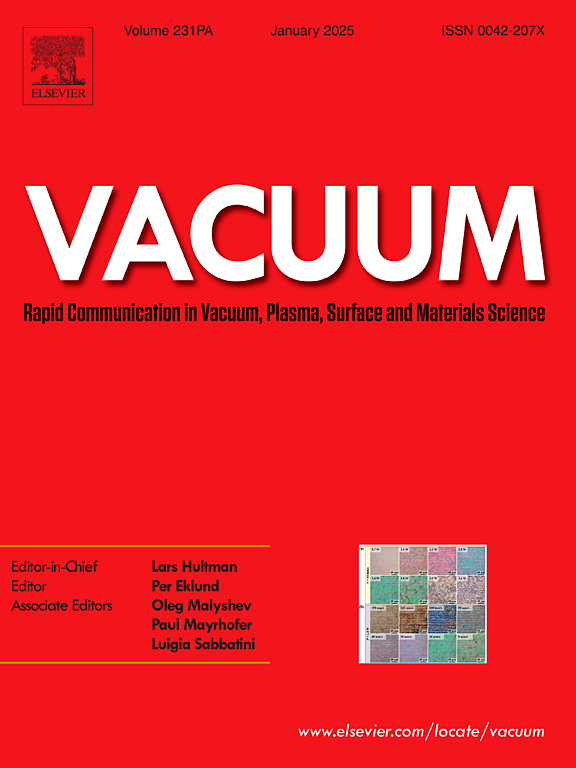Influence of sulfate-reducing bacteria on the corrosion mechanism of Zn-Al-Al2O3 composite coatings in artificial seawater
IF 3.8
2区 材料科学
Q2 MATERIALS SCIENCE, MULTIDISCIPLINARY
引用次数: 0
Abstract
The impact of sulfate-reducing bacteria (SRB) on the corrosion behavior and mechanism of Zn-Al-Al2O3 composite coating has been studied in artificial seawater solutions. The Zn-Al-Al2O3 composite coating immersed in sterile artificial seawater solution is also tested for comparison. The Zn-Al-Al2O3 composite coating exhibits excellent corrosion resistance and the Zn phase as sacrificing cathodic is corroded first due to its more negative corrosion potential. Surface oxides including ZnO and Al2O3 play a significant role in initial-stage corrosion protection. The Icorr value increased from 4.623 μA/cm2 to 8.428 μA/cm2, indicating that the presence of SRB affects corrosion products, corrosion rate and corrosion behavior. The corrosion mechanism of the Zn-Al-Al2O3 composite coating in SRB-containing artificial seawater solution is deduced by a detailed analysis of scanning electron microscope (SEM), X-ray photoelectron spectroscopy (XRD) and electrochemistry.
硫酸盐还原菌对Zn-Al-Al2O3复合镀层在人工海水中腐蚀机理的影响
研究了硫酸盐还原菌(SRB)对Zn-Al-Al2O3复合镀层在人工海水溶液中的腐蚀行为及其机理的影响。将Zn-Al-Al2O3复合涂层浸泡在无菌人工海水溶液中进行对比试验。Zn- al - al2o3复合镀层表现出优异的耐蚀性,Zn相作为牺牲阴极,由于其更负的腐蚀电位,首先被腐蚀。表面氧化物包括ZnO和Al2O3在初始腐蚀保护中起重要作用。Icorr值从4.623 μA/cm2增加到8.428 μA/cm2,表明SRB的存在影响了腐蚀产物、腐蚀速率和腐蚀行为。通过扫描电子显微镜(SEM)、x射线光电子能谱(XRD)和电化学分析,推导了Zn-Al-Al2O3复合涂层在含srb的人工海水溶液中的腐蚀机理。
本文章由计算机程序翻译,如有差异,请以英文原文为准。
求助全文
约1分钟内获得全文
求助全文
来源期刊

Vacuum
工程技术-材料科学:综合
CiteScore
6.80
自引率
17.50%
发文量
0
审稿时长
34 days
期刊介绍:
Vacuum is an international rapid publications journal with a focus on short communication. All papers are peer-reviewed, with the review process for short communication geared towards very fast turnaround times. The journal also published full research papers, thematic issues and selected papers from leading conferences.
A report in Vacuum should represent a major advance in an area that involves a controlled environment at pressures of one atmosphere or below.
The scope of the journal includes:
1. Vacuum; original developments in vacuum pumping and instrumentation, vacuum measurement, vacuum gas dynamics, gas-surface interactions, surface treatment for UHV applications and low outgassing, vacuum melting, sintering, and vacuum metrology. Technology and solutions for large-scale facilities (e.g., particle accelerators and fusion devices). New instrumentation ( e.g., detectors and electron microscopes).
2. Plasma science; advances in PVD, CVD, plasma-assisted CVD, ion sources, deposition processes and analysis.
3. Surface science; surface engineering, surface chemistry, surface analysis, crystal growth, ion-surface interactions and etching, nanometer-scale processing, surface modification.
4. Materials science; novel functional or structural materials. Metals, ceramics, and polymers. Experiments, simulations, and modelling for understanding structure-property relationships. Thin films and coatings. Nanostructures and ion implantation.
 求助内容:
求助内容: 应助结果提醒方式:
应助结果提醒方式:


